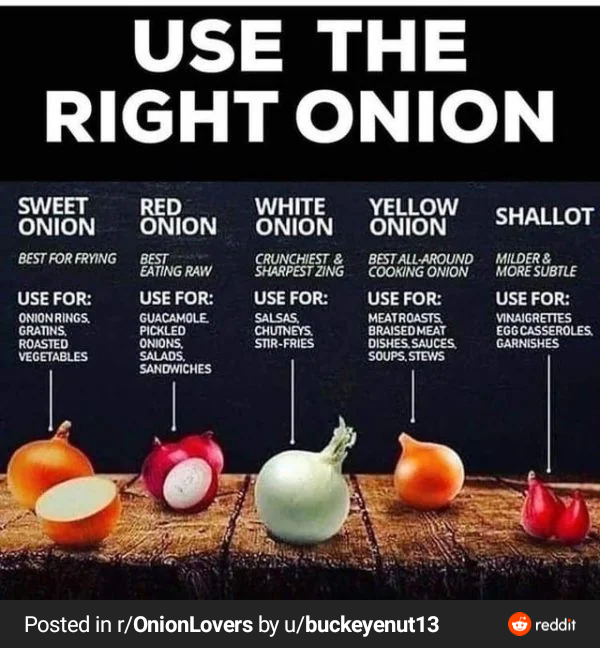
If you love onions as much as we do, then you’re going to want to know how to use them correctly. The best way to do this is by keeping your eyes peeled for different types of onions in the produce aisle of your local supermarket or farmer’s market. Once you get home and slice one open, it can be a little confusing trying to determine which type of onion is going to work best for what recipe. That’s why we’ve put together this handy guide on all things oniony. Onions are a staple of many cuisines. They’re available in many different varieties, and can be used in a number of ways. Onions are also good sources of vitamins A, C and B6. Onions contain sulfur compounds that make them strong smelling when they’re chopped or sliced open. This can cause some people to experience watery eyes or a burning sensation in their throat if they breathe too much onion vapor while cooking with it; however these effects will go away once you cook out all the sulfur compounds by cooking your onions longer on medium heat with little liquid until they start caramelizing (turning brown).
Sweet Onion
Sweet onions are the best onions for frying because of their milder flavor. They are also good raw, but not as good for cooking. If you want to make onion rings, sweet onions will work better than pungent ones because they don’t overpower the taste of your food.
Red Onion
The best way to use red onion is raw. This is because it has a milder flavor and more moisture than yellow or white onions. The red onion also has less pungent, so you can use them in salads without overpowering the other ingredients with its sharpness (like you would with yellow or white onions).
White Onion
White onions are the sharpest of all, and they’re perfect for raw applications like salads and sandwiches. For cooking, white onions are best suited to dishes that don’t need a lot of time in the pan–they can burn quickly if left unattended. They also work well when pickled or used fresh as an ingredient in salads or sandwiches.
Yellow Onion
Yellow onions are the most common variety of onion, and they’re a good choice for most dishes. They have a mild flavor that doesn’t overpower other ingredients in your dish, so you can use them in soups and stews without worrying about their taste being too strong. You can also use yellow onions in stir-fries or salads, as well as sandwiches and burgers. Yellow onions are versatile enough to complement many different flavors and textures–they’ll add a bit of sweetness to spicy dishes or balance out saltiness from cheese or bacon (or both!).
Shallot
Shallots are milder than onions and have a more subtle taste. They’re a great addition to soups, stews and sauces–especially if you’re looking for a way to add flavor without overpowering the dish. Shallots are also great for making dips because they lend themselves well to being blended into creamy spreads like hummus or guacamole. In addition to being delicious on their own, shallots can be used in place of onions when cooking certain dishes (or even just as an ingredient). For example:
There are many types of onions, and all of them are good. But each performs differently in different situations. Now you know how to use onions correctly. The next time you’re cooking up something delicious, remember that there are many different kinds of onions with their own unique flavors and uses. From sweet reds for raw eating to white ones for sharpest zing, there’s no wrong answer when it comes to these tasty vegetables!
